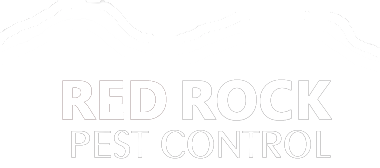It focuses primarily on the interaction between team members rather than tools and processes. The future strategy and team size get decided as per the project’s criticality and business priorities. Clients’ requirements may change pretty often, so product owners should keep the team updated whenever the product needs additional changes. Agile methodology is a perfect option to deliver a superior quality product in a short time. Let’s consider what makes Agile is so beneficial and why many companies use it.

Today, many agile teams combine practices from a few different frameworks, spiced up with practices unique to the team. Some teams adopt some agile rituals (like regular stand-ups, retros, backlogs, etc.), while others created a new agile practice . But it’s not just a numbers game—first and foremost, it’s about people. As described by the Agile Manifesto, authentic human interactions are more important than rigid processes.
What are the 5 Agile methodologies?
There are two storyboards available to track the work on a daily basis, and those are listed below for reference. The Agile Development is more code focused and produces less documentation. People and interactions are given a higher priority rather than process and tools. Give them the environment and the support they need, and trust them to get the job done.

Its key principles include communication, teamwork and simplicity. During the second step,inception, team members are identified, funding is established and the initial requirements are discussed with the customer. A timeline should also be created that outlines the various responsibilities of teams and clearly defines when work is expected to be completed for eachsprint. A sprint is a set period of time during which specific work has to be completed and made ready for review. Another criticism is that in many ways, agile management and traditional management practices end up being in opposition to one another.
Agile values
They collaborate with the testing team at the end of every sprint to identify and fix issues. The Agile Development methodology is the innovative approach to develop software products where flexibility and speed hold precedence. Agile introduces the iterative and incremental development method to ensure foolproof and accelerated delivery. Rapid application development begins with defining the project requirements.
Only after the development phase, the testing phase is executed because separate parts are not fully functional. Agile development is heavily depended on the inputs of the customer. If the customer has ambiguity in his vision of the final outcome, it is highly likely for the project to get off track.
Get the latest news, tips, and guides on software development.
Each task phase is monitored from left to right as it transitions from initial planning to completion. With sections for different project team needs, the Scrumban board can be modified, and it can contain different https://www.globalcloudteam.com/glossary/agile-software-development/ sections, such asBacklog, WIP, and Done, with the relevant names. Workflow visualization refers to visually representing the status of different activities on the visual board to keep track of progress.

It’s based on a specific planning approach, pair programming, sustained testing, continuous integration, and small releases. In this article, we’re talking about Agile software development methodologies and practices. You’ll also learn what phases the Agile life cycle consists of when it comes to software development. In the final phase, the operations, it describes the ongoing support and maintenance of the deployed software. Agile methodologies recognize that software development is an ongoing process, and teams must be responsive to customer feedback and adapt to changing requirements.
Phase 2: Design
Likewise, software teams use Kanban tools to manage the workflow in Scrumban projects. To portray a better picture of the tasks and their progress, Scrumban uses visual boards. Moreover, another important feature that Scrumban adopts from the Kanban is limited WIP to avoid overburdening teams to do a lot of different tasks simultaneously. For example, designing and launching a new product might push a team against several unforeseen challenges. Having an Agile approach can mean the project already has the methodology to test products as often as needed, iterate quickly, and communicate changes with stakeholders. Agile is technically not a methodology by itself, but rather a mindset for approaching how projects get done.

Before each sprint, in the sprint planning meeting (which we’ll discuss later in the article) the team chooses which items it will work on for the sprint from the product backlog. However, the fundamental sprint goal – what the team wants to achieve from the current sprint – cannot be compromised. Empiricism says that knowledge comes from experience and that decisions are made based on what https://www.globalcloudteam.com/ is observed. The scrum framework is heuristic; it’s based on continuous learning and adjustment to fluctuating factors. It acknowledges that the team doesn’t know everything at the start of a project and will evolve through experience. While still an iterative method of project management, this model focuses more on the exact features of a software that the team is working to develop.
Agile Methodology
A project plan is important, but it must not be too rigid to accommodate changes in technology or the environment, stakeholders’ priorities, and people’s understanding of the problem and its solution. Good documentation is useful in helping people to understand how the software is built and how to use it, but the main point of development is to create software, not documentation. Agile methodology includes concept, inception, construction, release, production, and retirement phases. When these increments are loosely coupled and can function independently of the existing user stories, it is known to follow the microservices architecture.
- In 2001, 17 software development professionals gathered to discuss concepts around the idea of lightweight software development and ended up creating theAgile Manifesto.
- Agile started when many software developers began noticing that the production cycles and collaboration methods of waterfall were not producing the desired results.
- There are many theories about how exactly scrum teams must work in order to be successful.
- The team closes the sprint with a review, then starts a new sprint.
- On the other hand, agile development provides increased transparency, continuous feedback, and more flexibility when responding to changes.
- After each sprint, the product backlog is reevaluated, analyzed and reprioritized in order to select a new set of deliverable functions for the next sprint.
- Most of the time, organizations confuse Agile Development and the scrum process to be the same.
An agile supply chain can increase and reduce its capacity rapidly, so it can adapt to a fast-changing customer demand. Finally, strategic agility is the ability of an organisation to change its course of action as its environment is evolving. The key for strategic agility is to recognize external changes early enough and to allocate resources to adapt to these changing environments. A similar survey, the State of Agile, is conducted every year starting in 2006 with thousands of participants from around the software development community. This tracks trends on the perceived benefits of agility, lessons learned, and good practices. Surveys have also consistently shown better results with agile product development methods compared to classical project management.
What is Agile Monitoring?
Because of its non-linear structure, it’s common for the phases to overlap. Agile isn’t defined by a set of ceremonies or specific development techniques. Rather, agile is a group of methodologies that demonstrate a commitment to tight feedback cycles and continuous improvement. Most coaches recommend starting agile practices with well-defined business objectives, a few selected teams, and limited, optimally chosen tools. Scrumban enables the teams to enhance their efficiency in responding to changing requirements, improving working practices, and delivering high-quality software.

